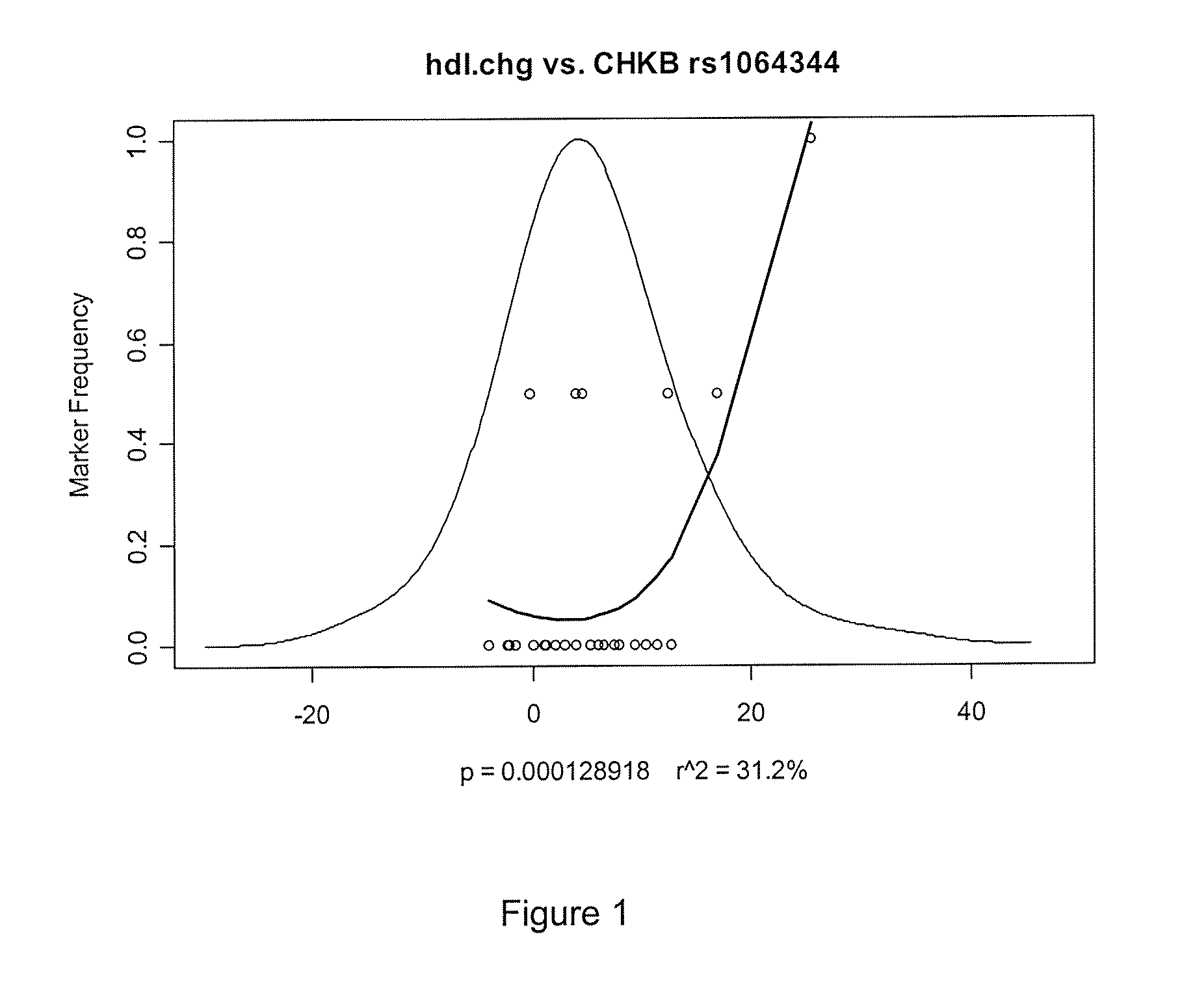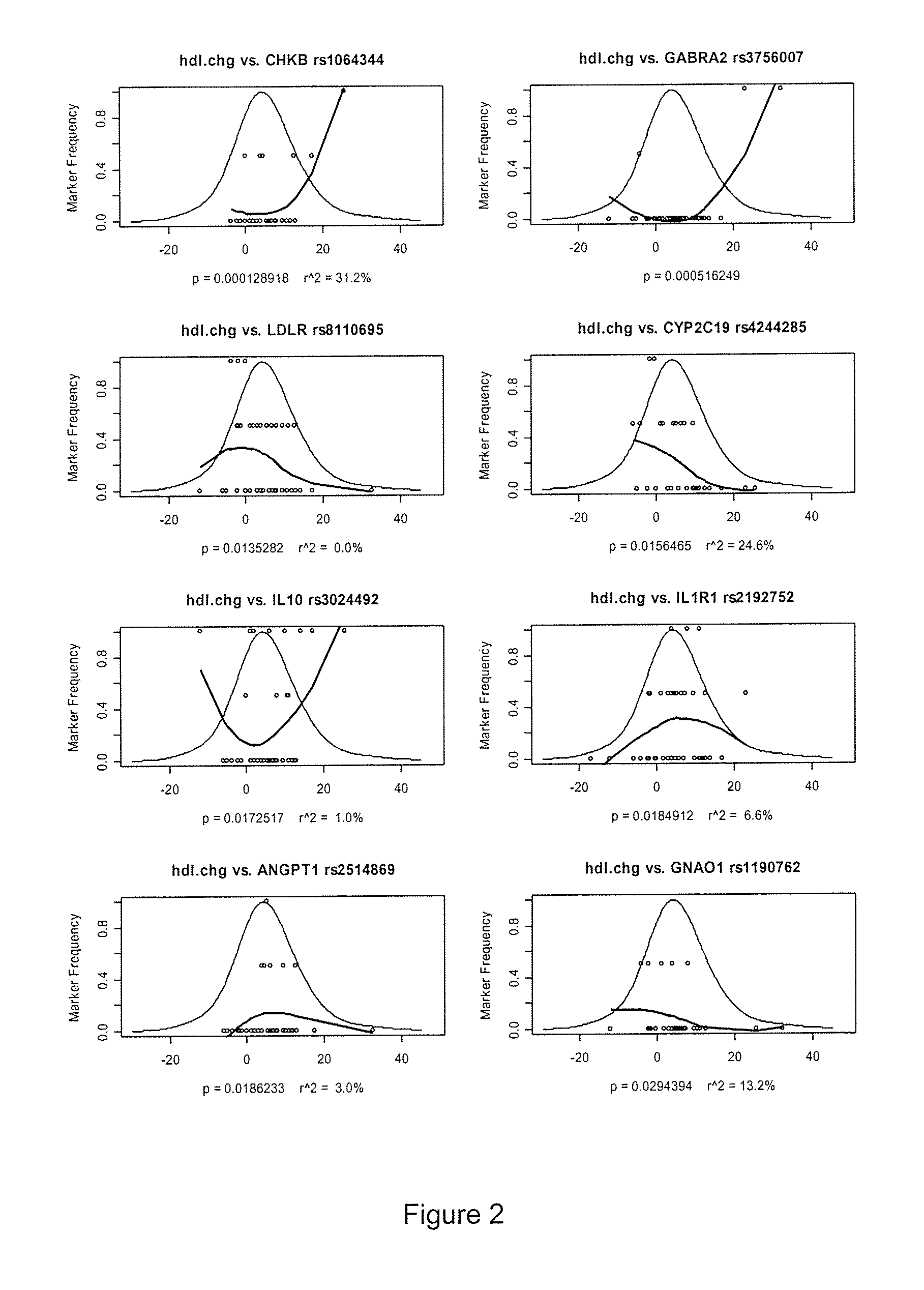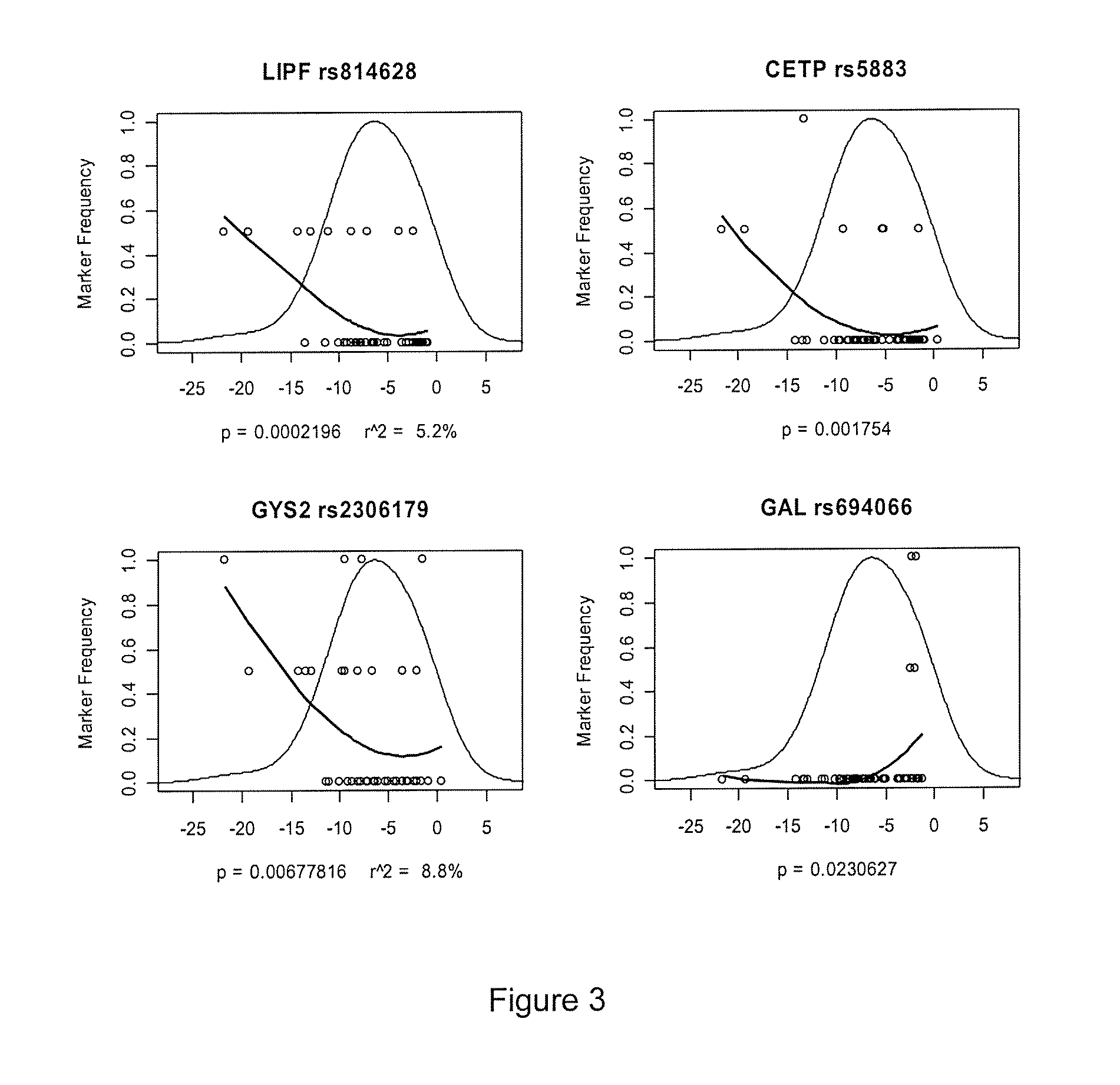Physiogenomic method for predicting response to diet
a physiogenomic method and diet technology, applied in the field of physiological genomics, can solve the problems of public health crisis, obesity increases the risk of developing cardiovascular disease, diabetes, high blood pressure, and other serious conditions, and contributes to carbohydrate-induced hypertriglyceride. hypertriglyceride, reduce the occurrence of obesity related morbidity and mortality, and improve the effect of health
- Summary
- Abstract
- Description
- Claims
- Application Information
AI Technical Summary
Benefits of technology
Problems solved by technology
Method used
Image
Examples
example 1
Physiogenomic Analysis of Patient Response to Interventional Low-Carbohydrate Dieting
[0040] Physiogenomics were used as a technique to explore the variability in patient response to VLC diet. Physiogenomics is a medical application of sensitivity analysis [30]. Sensitivity analysis is the study about the relations between the input and the output of a model and the analysis utilizing systems theory, of how variation of the input leads to changes in output quantities. Physiogenomics utilizes as input the variability in genes, measured by single nucleotide polymorphisms (SNP) and determines how the SNP frequency among individuals relates to the variability in physiological characteristics, the output.
[0041] The goal of the investigation was to develop physiogenomic markers for predicting anthropomorphic, lipid and endocrine effects of diets by using an informatics platform to analyze data from interventional dietary studies.
Materials and Methods
[0042] Patient enrollment. Overweig...
PUM
| Property | Measurement | Unit |
|---|---|---|
| Volume | aaaaa | aaaaa |
| Volume | aaaaa | aaaaa |
| Volume | aaaaa | aaaaa |
Abstract
Description
Claims
Application Information
 Login to View More
Login to View More - R&D
- Intellectual Property
- Life Sciences
- Materials
- Tech Scout
- Unparalleled Data Quality
- Higher Quality Content
- 60% Fewer Hallucinations
Browse by: Latest US Patents, China's latest patents, Technical Efficacy Thesaurus, Application Domain, Technology Topic, Popular Technical Reports.
© 2025 PatSnap. All rights reserved.Legal|Privacy policy|Modern Slavery Act Transparency Statement|Sitemap|About US| Contact US: help@patsnap.com



